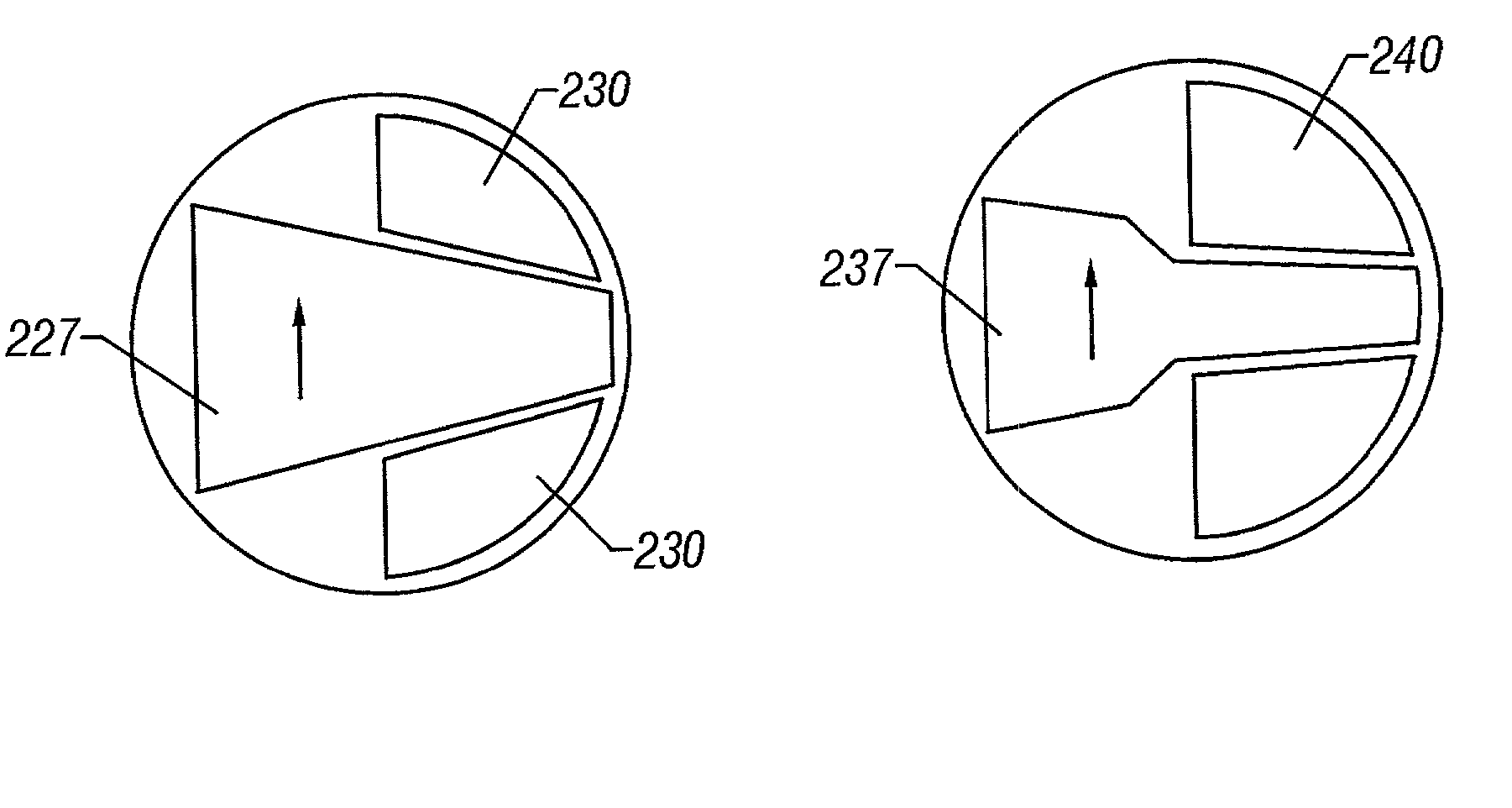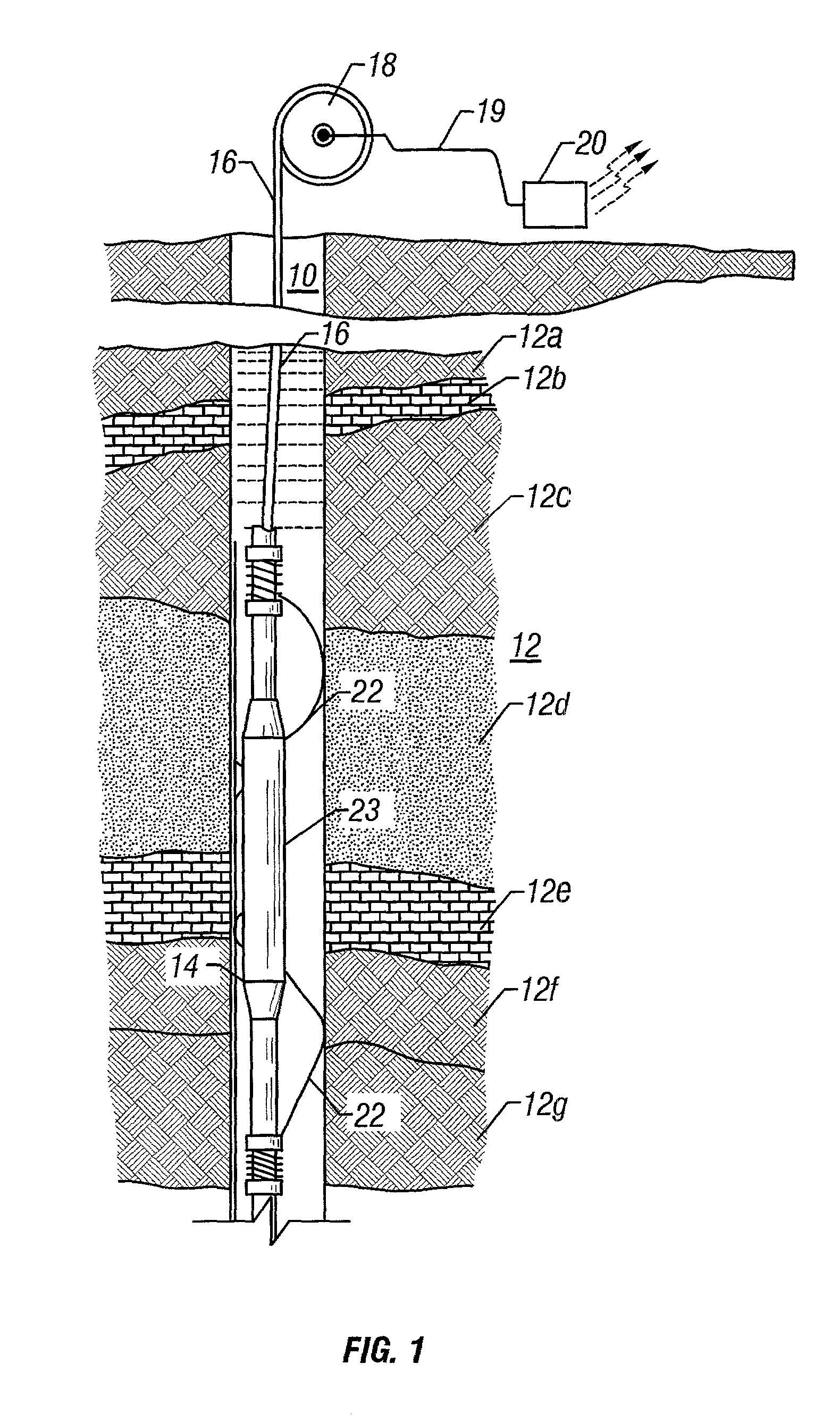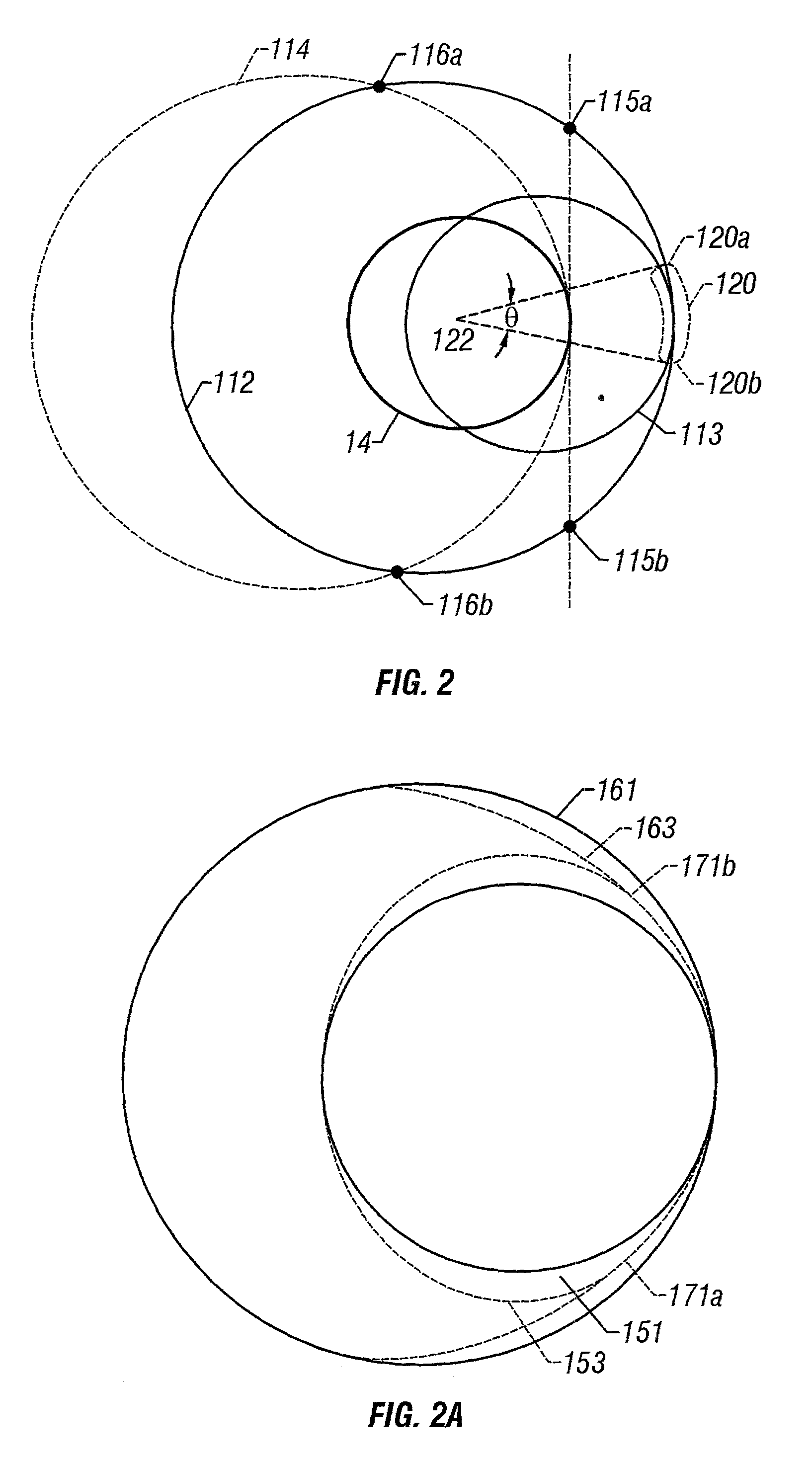Side-looking NMR probe for oil well logging
a nmr probe and oil well technology, applied in the direction of nmr measurement, reradiation, instruments, etc., can solve the problems of nmr signal degradation, device operation at relatively low logging speed, limited axial extent of the examination region, etc., to improve the effectiveness of the tool, increase the effective radius, and the effect of greater depth
- Summary
- Abstract
- Description
- Claims
- Application Information
AI Technical Summary
Benefits of technology
Problems solved by technology
Method used
Image
Examples
Embodiment Construction
[0024] FIG. 1 depicts a borehole 10 which has been drilled in a typical fashion into a subsurface geological formation 12 to be investigated for potential hydrocarbon producing reservoirs. An NMR logging tool 14 has been lowered into the hole 10 by means of a cable 16 and appropriate surface equipment represented diagrammatically by a reel 18 and is being raised through the formation 12 comprising a plurality of layers 12a through 12g of differing composition, to log one or more of the formation characteristics. The NMR logging tool is provided with bow springs 22 to maintain the tool in an eccentric position within the borehole with one side of the tool in proximity to the borehole wall. The permanent magnets used for providing the static magnetic field is indicated by 23 and the magnet configuration is that of a line dipole. Signals generated by the tool 14 are passed to the surface through the cable 16 and from the cable 16 through another line 19 to appropriate surface equipment...
PUM
 Login to View More
Login to View More Abstract
Description
Claims
Application Information
 Login to View More
Login to View More - R&D
- Intellectual Property
- Life Sciences
- Materials
- Tech Scout
- Unparalleled Data Quality
- Higher Quality Content
- 60% Fewer Hallucinations
Browse by: Latest US Patents, China's latest patents, Technical Efficacy Thesaurus, Application Domain, Technology Topic, Popular Technical Reports.
© 2025 PatSnap. All rights reserved.Legal|Privacy policy|Modern Slavery Act Transparency Statement|Sitemap|About US| Contact US: help@patsnap.com



